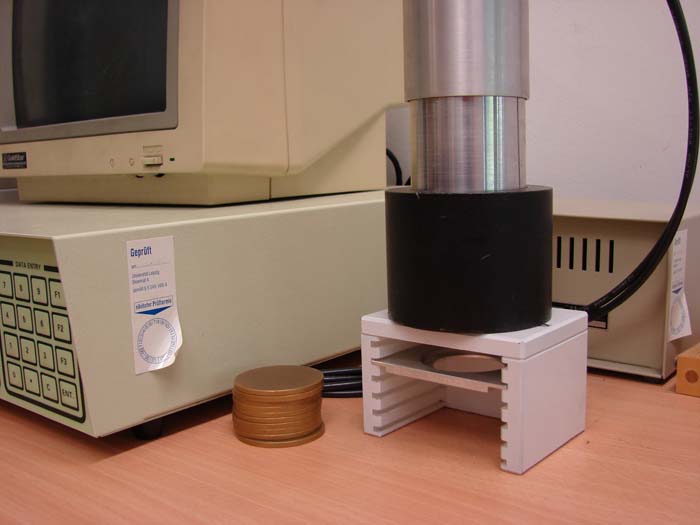ASTM C1413 Radiochemical Determination of Radium by Alpha Spectrometry
The ASTM C1413 standard provides a method for determining radium concentration in water, soil, and other materials using radiochemical techniques combined with alpha spectrometry. This service ensures accurate measurement of radium content, which is critical for compliance with environmental regulations and ensuring public safety.
Radium is a radioactive element that can pose significant health risks when present at elevated levels. The ASTM C1413 method involves several steps: sample collection, radiochemical separation of radium isotopes, and subsequent measurement using alpha spectrometry. This process ensures precise quantification of the radium concentration in the material being tested.
The ASTM standard specifies detailed procedures for sample preparation, including digestion with nitric acid to dissolve the solid matrix and then adding a chelating agent like EDTA to complex with radium ions. After this step, the solution is filtered and transferred into a vial suitable for alpha spectrometry analysis. The radiochemical separation ensures that only radium isotopes are detected by the spectrometer.
The test utilizes an alpha spectrometer, which detects alpha particles emitted from the radium source. These particles are counted over time, and their energy levels are used to identify the specific isotope of radium present. This method allows for accurate quantification of both 226Ra and 228Ra isotopes, which are commonly found in environmental samples.
Accurate measurement of radium is essential for regulatory compliance, especially in areas with known geological sources or historical contamination from industrial activities. The ASTM C1413 method ensures that results meet strict international standards, such as those set by ISO and the Environmental Protection Agency (EPA).
The precision and accuracy of this test are crucial for ensuring reliable data. The ASTM standard includes detailed calibration procedures using reference materials to ensure consistent results across different laboratories. This precision is particularly important in environmental monitoring programs where long-term trends need to be tracked accurately.
Our laboratory adheres strictly to the ASTM C1413 protocol, providing clients with accurate and compliant radium concentration data. Our experienced staff ensures that all steps of the process are followed rigorously, from sample preparation to final analysis. The use of advanced instrumentation and meticulous attention to detail guarantees reliable results.
Understanding the context of this test is important for those working in sectors such as environmental protection, public health, and industrial hygiene. By providing accurate radium concentration data, we help ensure that regulatory requirements are met and that potential risks are minimized.
Industry Applications
| Application Area | Description |
|---|---|
| Environmental Monitoring | Detecting radium in soil, water, and air to ensure compliance with environmental regulations. |
| Industrial Hygiene | Evaluating the risk of radium exposure in workplaces where employees may be exposed to radioactive materials. |
| Potable Water Testing | Ensuring that drinking water does not contain harmful levels of radium, which can cause health issues over time. |
| Hazardous Waste Management | Classifying waste based on its radium content to determine appropriate disposal methods and storage requirements. |
| Soil Remediation | Evaluating the effectiveness of remediation efforts by measuring changes in radium concentration over time. |
Why Choose This Test
The ASTM C1413 method offers several advantages that make it an ideal choice for determining radium concentrations. The radiochemical separation ensures a pure sample, which leads to more accurate results. Alpha spectrometry provides high sensitivity and selectivity, making it possible to detect even trace amounts of radium.
Compliance with environmental regulations is crucial in many industries, particularly those involved in water treatment, waste management, and industrial processes. Our laboratory ensures that all tests are conducted according to the ASTM C1413 standard, providing results that meet international standards. This compliance is essential for avoiding costly fines and ensuring public safety.
The precision of this test allows for accurate tracking of radium levels over time. In environmental monitoring programs, this can help identify trends in contamination or effectiveness of remediation efforts. For industrial applications, precise measurements ensure that workers are not exposed to unsafe levels of radiation.
Our laboratory uses state-of-the-art equipment and experienced staff to provide reliable results every time. By choosing our ASTM C1413 service, clients can trust that they will receive accurate data that meets the highest standards.





